By Dan Weisz
I went to Sweetwater Wetlands one morning during the summer. Shortly after arriving, I saw that a crew was working on repairing and replacing cracked and broken sidewalks in the park. Just past one completed section, there were fresh dirt tracks across the clean sidewalk. Those tracks shouted out “Raccoons”!!! I hadn’t seen raccoons at the Wetland for quite a while and was hopeful that this was, indeed, a very good sign.
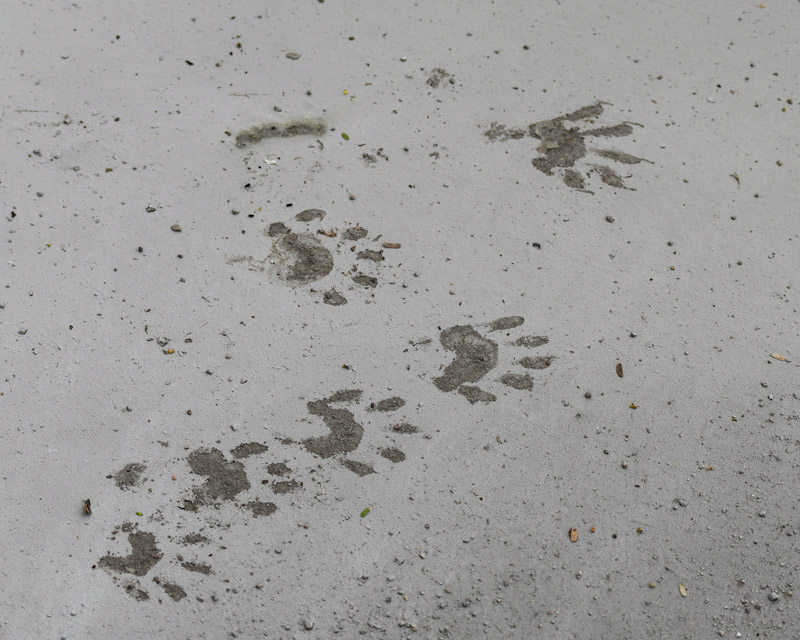
I walked around the wetlands for over an hour until I lucked into spotting the raccoons on the southwest side. They quickly slipped back into the reeds. I waited for ten minutes hoping for their return and was rewarded when they emerged from the reeds about twenty yards from where I had first spotted them. The first raccoon looked back.
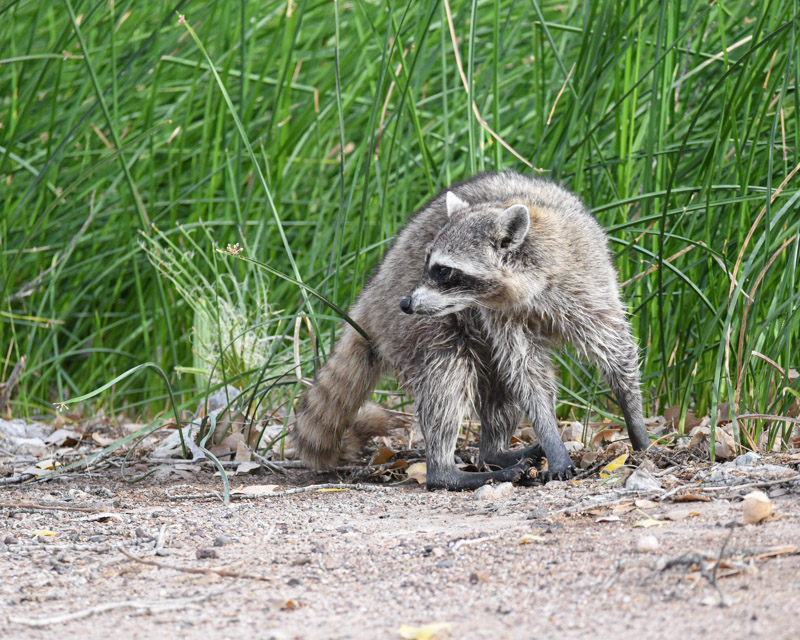
And he and I both watched its sibling emerge from the reeds. From the look of the fur on both raccoons, they had been wading through the water. The fur on their backs hadn’t been wet. Although they are excellent swimmers, I don’t believe they had been swimming yet. The raccoon below has a scar on its cheek from some rough action in its past, and I like how in this photo you can see the spread toes on its left foot. The toes on raccoons are very special and they function essentially as five little fingers, allowing the raccoons to grasp and manipulate foods found in the wild. A raccoon’s most heightened sense is its sense of touch. Those long toes are what made the tracks I saw when I entered Sweetwater.
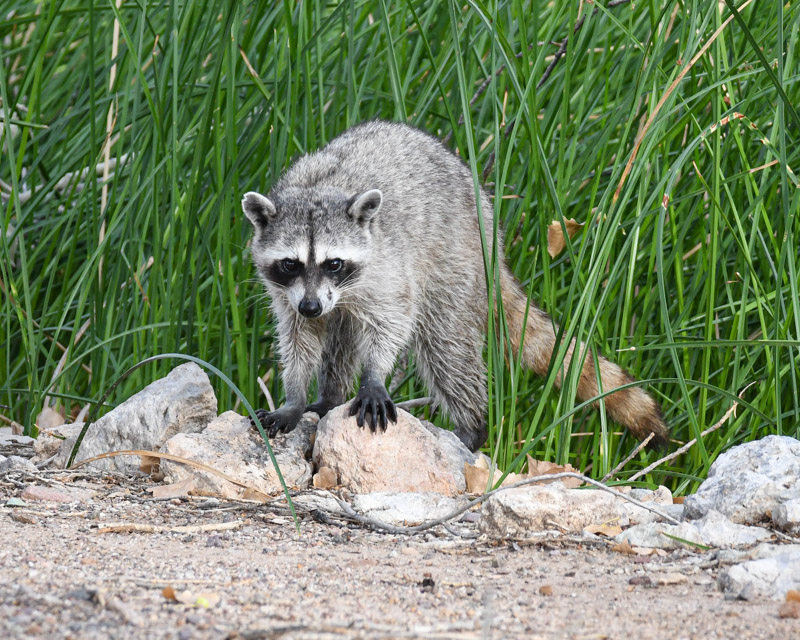
And there is that raccoon’s tongue- just a fun shot. Again, both front feet and toes show well here. When colonists arrived in Jamestown in 1607, they learned about raccoons from the Native Americans living there. The English word “raccoon” is an adaption of a native Powhatan word meaning “animal that scratches with its hands.”
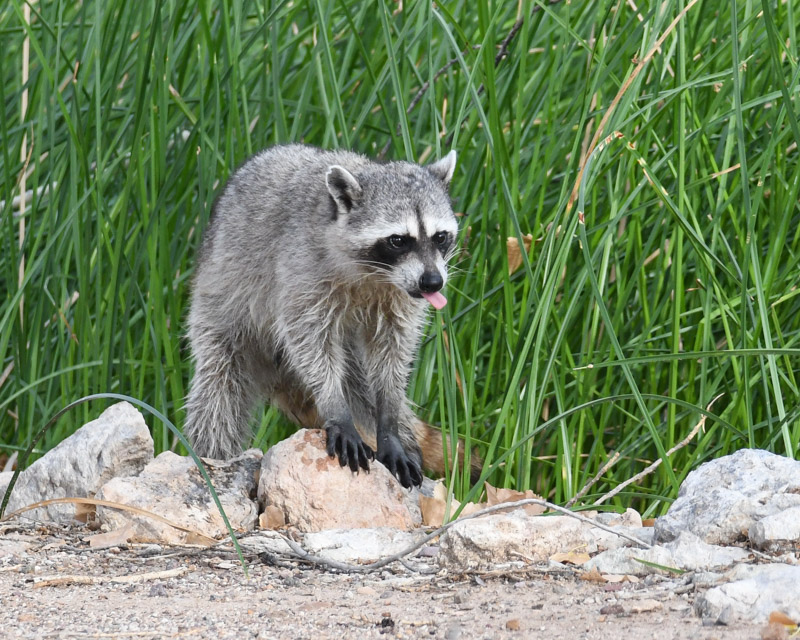
Then I noticed that the raccoon in the front had a very fresh injury on its forehead. Life is tough out there for raccoons with a life expectancy in the wild of only 2-3 years.
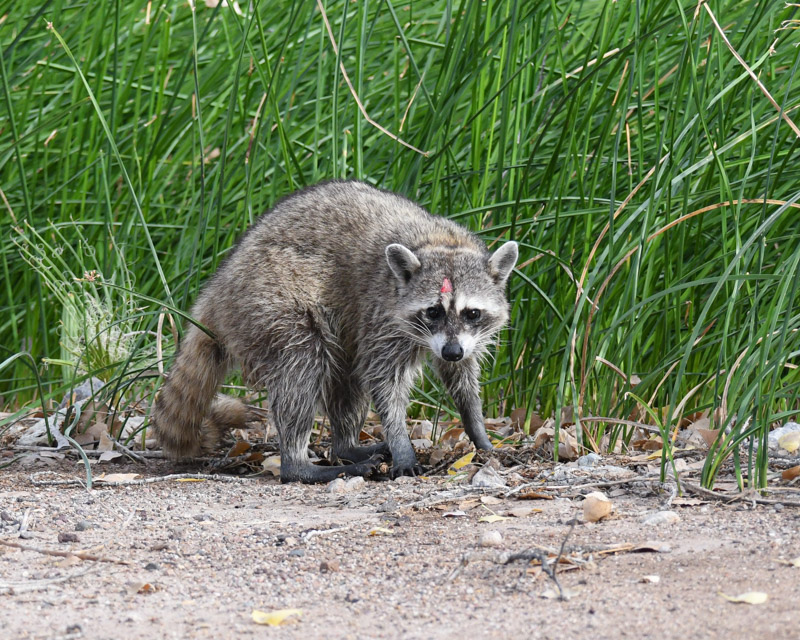
And then they were off. Because these two raccoons were in a pair, I believe they are the two siblings that grew up at Sweetwater last summer. Kits, as they are called, will often remain together and with their mother for 13-14 months until they go off and create their own territories and family. Adult raccoons do not live together as mated pairs. The raccoon in the front looks a bit larger so I assume that one is a male, although I could be wrong.
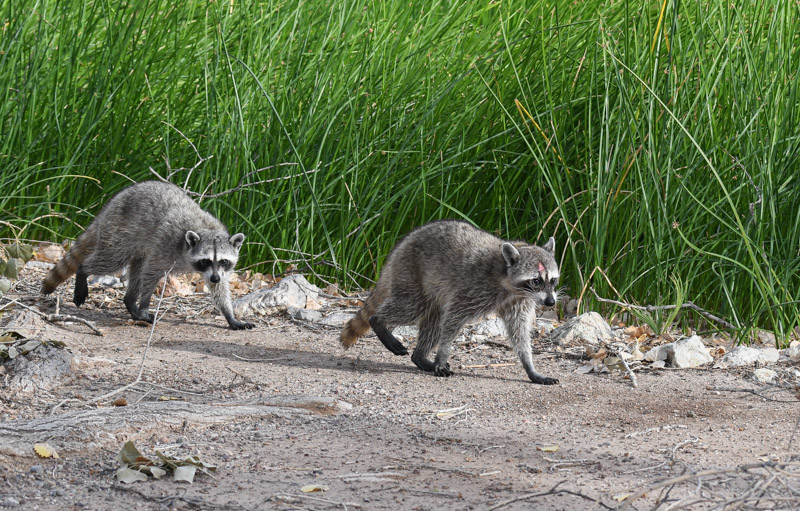
The photo below shows the peculiar method of walking that raccoons have. They step with both feet on one side at a time, with the hind foot stepping as far forward as the front foot on the other side. Also note how much larger the raccoon’s hind foot is compared to its front foot.
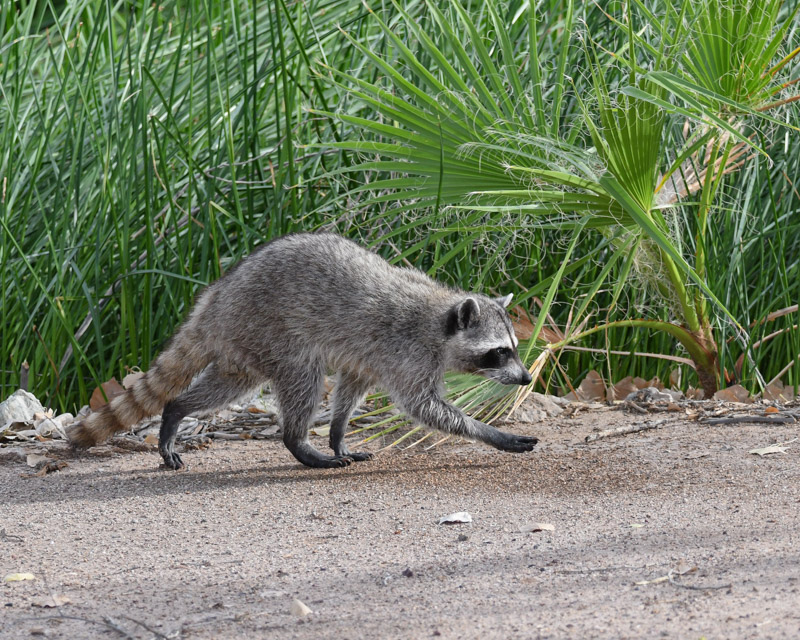
Further down the path, the larger raccoon paused to look back. People are surprised to know that raccoons live in the Sonoran Desert, but as long as there is water somewhere nearby, raccoons do very well. Raccoons are smart animals with an impressive ability to adapt. That, and the fact that they are omnivorous, has enabled them to move into a wide range of habitats (including large cities) in North America.
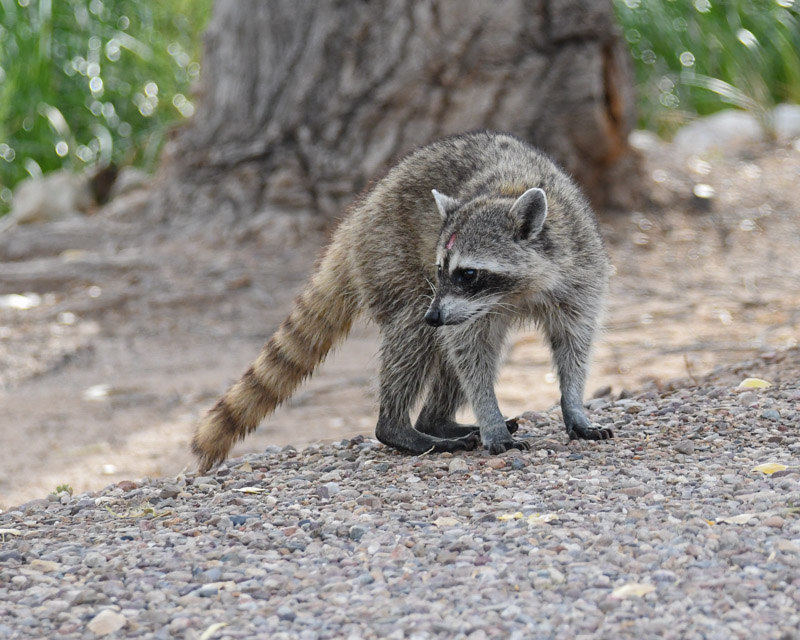
And then it was off running. I like this shot because two feet are in the air, with the raccoon balancing on the other two feet as it trots off. Raccoons can run at up to 15 miles per hour and this one was moving fast!
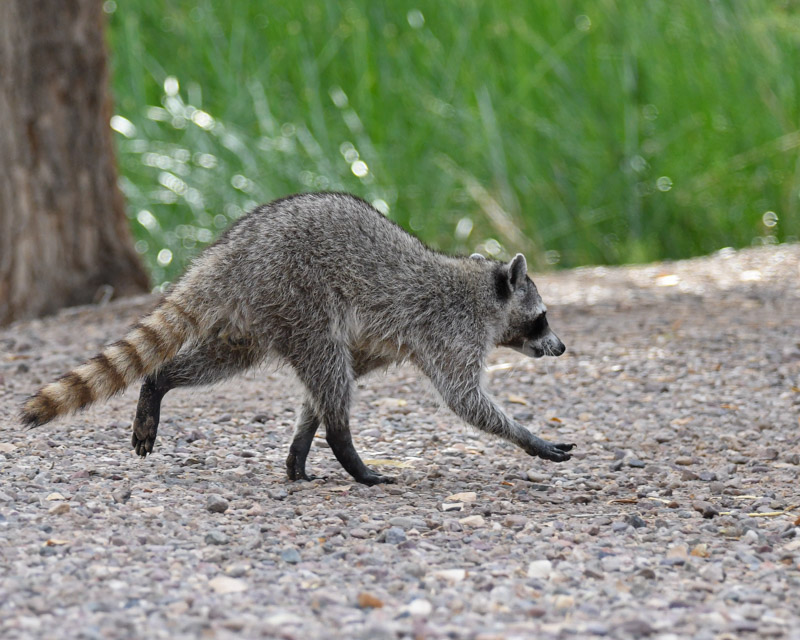
The raccoons crossed back and forth across the path. Here they are emerging from the brush away from the reeds. This time the smaller raccoon has taken the lead.
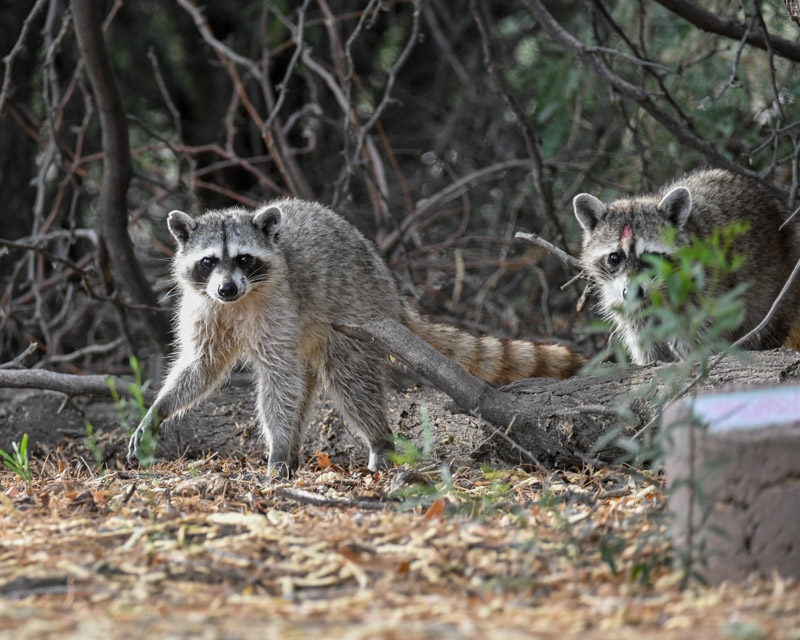
After crossing the path, they disappeared into the reeds. After several long minutes, the larger raccoon emerged, looked back for its sibling, and then stood up to try to get a better look at it.
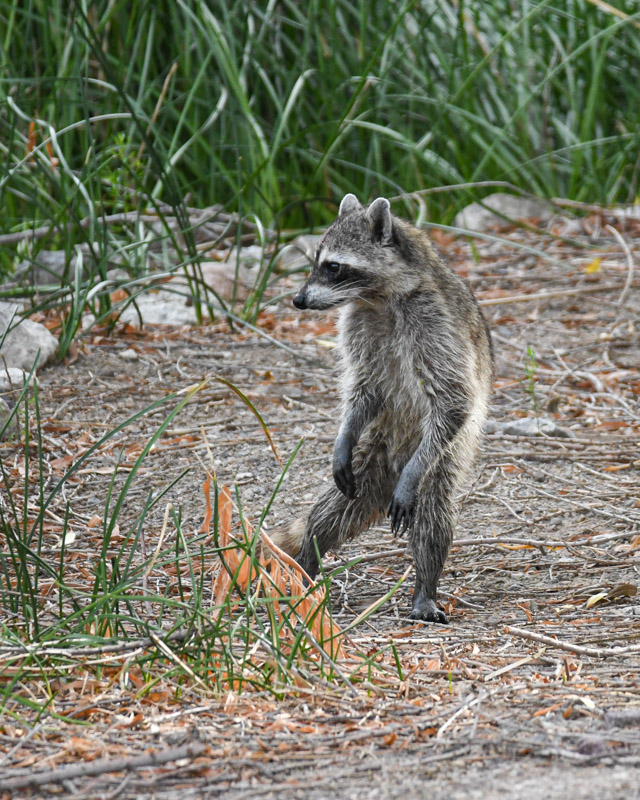
After being satisfied with what it saw, it settled back down.
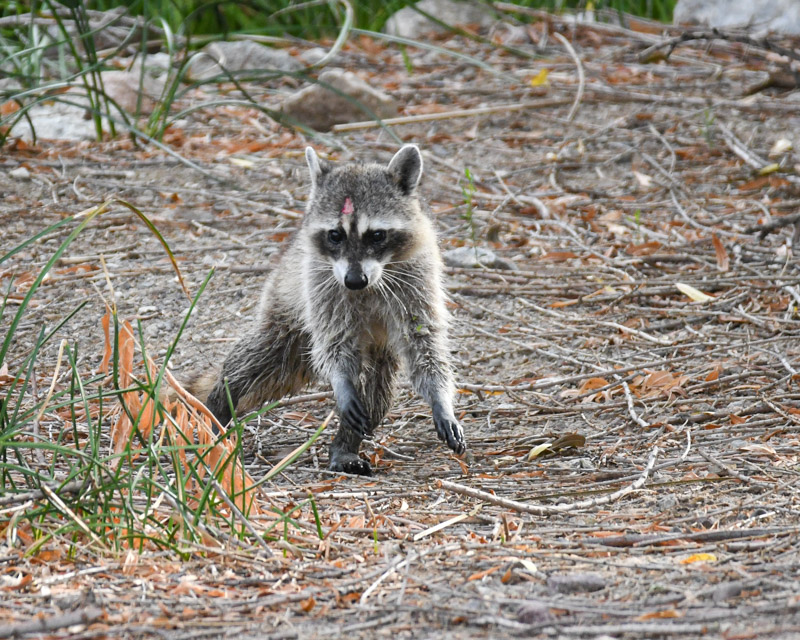
It waited for its sibling to emerge, glancing at me again.
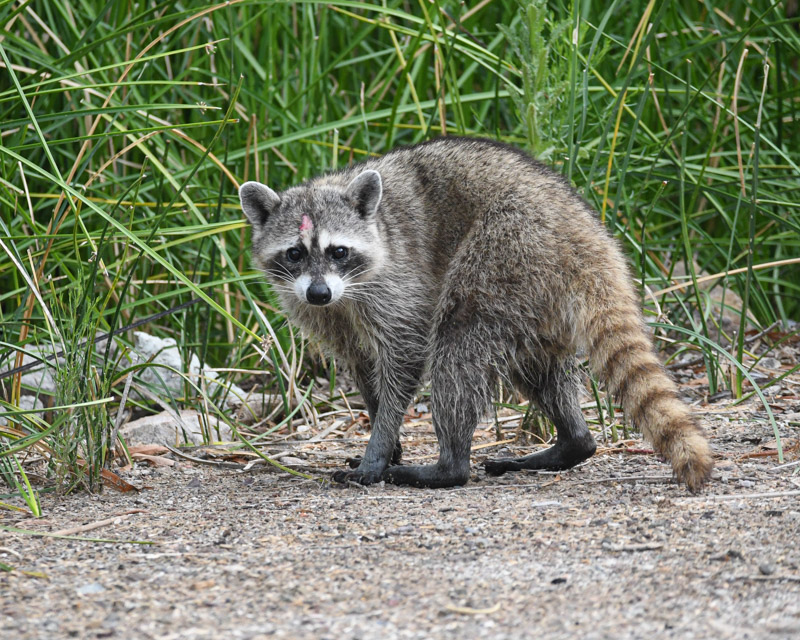
And then they both ran off down the trail.
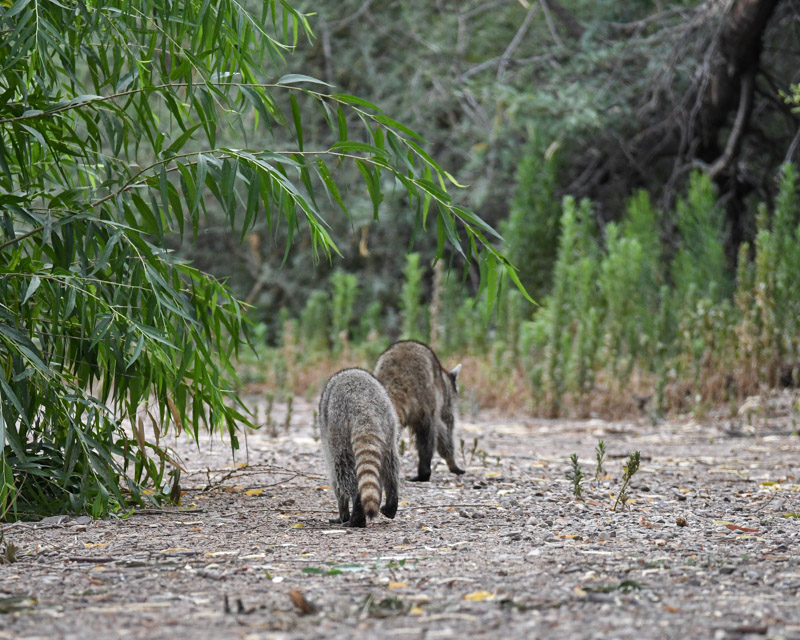
That was the end of twenty very special minutes for me.
